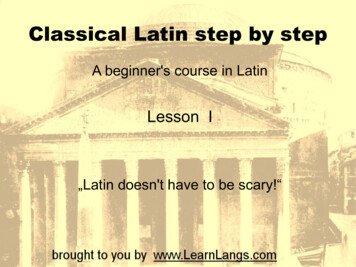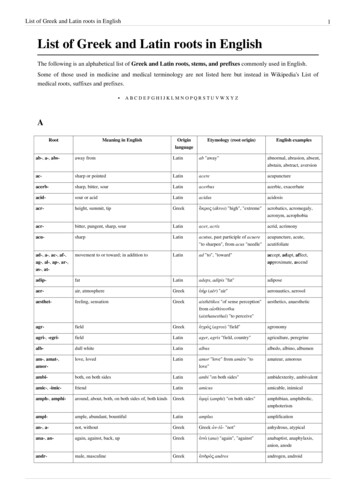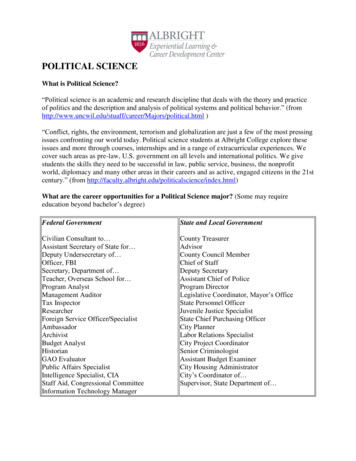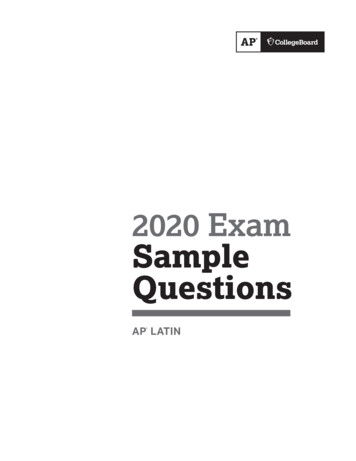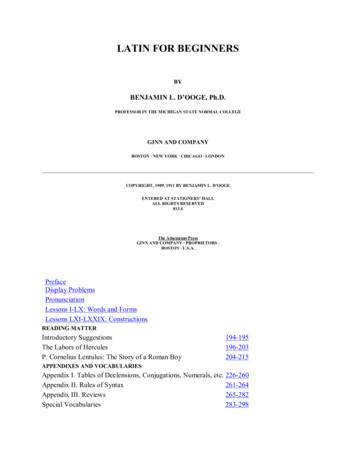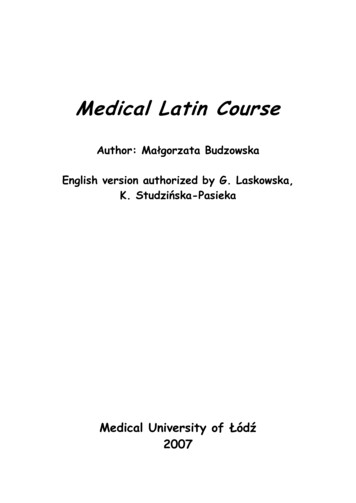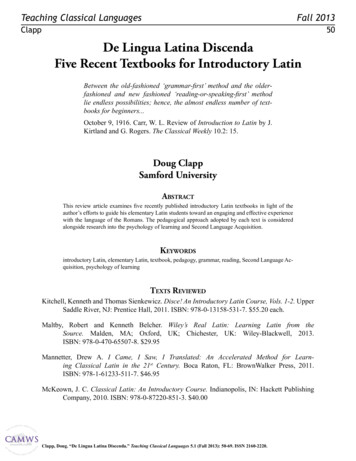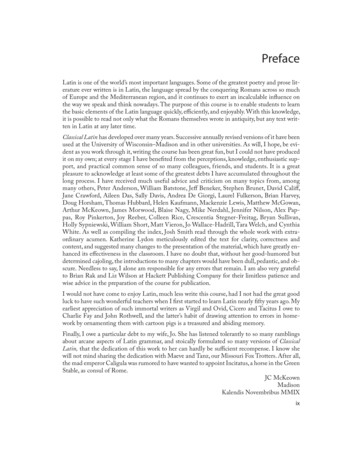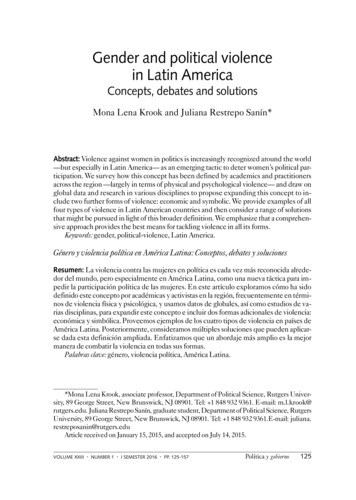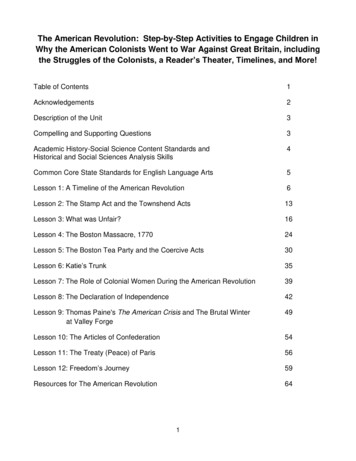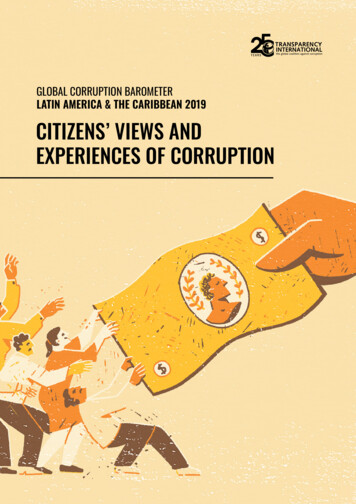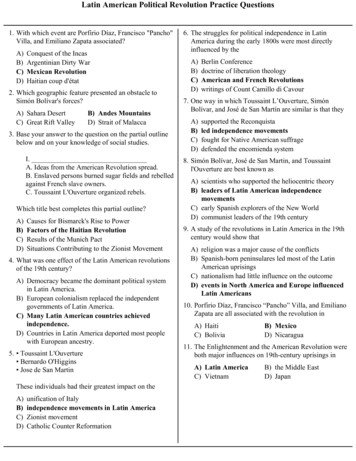
Transcription
Latin American Political Revolution Practice Questions1. With which event are Porfirio Díaz, Francisco "Pancho"Villa, and Emiliano Zapata associated?A)B)C)D)Conquest of the IncasArgentinian Dirty WarMexican RevolutionHaitian coup d'état2. Which geographic feature presented an obstacle toSimón Bolívar's forces?A) Sahara DesertC) Great Rift ValleyB) Andes MountainsD) Strait of Malacca3. Base your answer to the question on the partial outlinebelow and on your knowledge of social studies.I.A. Ideas from the American Revolution spread.B. Enslaved persons burned sugar fields and rebelledagainst French slave owners.C. Toussaint L'Ouverture organized rebels.Which title best completes this partial outline?A)B)C)D)Causes for Bismarck's Rise to PowerFactors of the Haitian RevolutionResults of the Munich PactSituations Contributing to the Zionist Movement4. What was one effect of the Latin American revolutionsof the 19th century?A) Democracy became the dominant political systemin Latin America.B) European colonialism replaced the independentgovernments of Latin America.C) Many Latin American countries achievedindependence.D) Countries in Latin America deported most peoplewith European ancestry.5. Toussaint L'Ouverture Bernardo O'Higgins Jose de San MartinThese individuals had their greatest impact on theA)B)C)D)unification of Italyindependence movements in Latin AmericaZionist movementCatholic Counter Reformation6. The struggles for political independence in LatinAmerica during the early 1800s were most directlyinfluenced by theA)B)C)D)Berlin Conferencedoctrine of liberation theologyAmerican and French Revolutionswritings of Count Camillo di Cavour7. One way in which Toussaint L’Ouverture, SimónBolívar, and José de San Martín are similar is that theyA)B)C)D)supported the Reconquistaled independence movementsfought for Native American suffragedefended the encomienda system8. Simón Bolívar, José de San Martin, and Toussaintl'Ouverture are best known asA) scientists who supported the heliocentric theoryB) leaders of Latin American independencemovementsC) early Spanish explorers of the New WorldD) communist leaders of the 19th century9. A study of the revolutions in Latin America in the 19thcentury would show thatA) religion was a major cause of the conflictsB) Spanish-born peninsulares led most of the LatinAmerican uprisingsC) nationalism had little influence on the outcomeD) events in North America and Europe influencedLatin Americans10. Porfirio Díaz, Francisco “Pancho” Villa, and EmilianoZapata are all associated with the revolution inA) HaitiC) BoliviaB) MexicoD) Nicaragua11. The Enlightenment and the American Revolution wereboth major influences on 19th-century uprisings inA) Latin AmericaC) VietnamB) the Middle EastD) Japan
Latin American Political Revolution Practice QuestionsBase your answers to questions 12 and 13 on for the information below12. Which individual is most closely associated with the changes indicated on these maps?A) Emiliano ZapataC) Porfirio DiazB) Simón BolívarD) Pancho Villa13. Based on a comparison of these maps of South America, which conclusion is accurate?A)B)C)D)Many regions of South America gained their independence between 1790 and 1828.All of South America was independent by 1828.Spain continued to gain South American colonies in the 19th century.Between 1790 and 1828, South American political boundaries remained unchanged except for Brazil.
Latin American Political Revolution Practice Questions14. Base your answer to the following question on the maps below and on your knowledge of social studies.Between 1790 and 1828, which situation helped cause the change reflected on these maps of SouthAmerica?A)B)C)D)The Aztecs regained control of many areas of South America.South American voters removed Spanish and Portuguese rulers from power.Spain sent conquistadores to South America.Enlightenment and revolutionary ideas spread from Europe and the United States to SouthAmerica.15. ". . . Give Venezuela such an executive power in theperson of a president chosen by the people or theirrepresentatives, and you will have taken a great steptoward national happiness. No matter what citizenoccupies this office, he will be aided by theConstitution, and therein being authorized to do good,he can do no harm, because his ministers will cooperatewith him only insofar as he abides by the law. If heattempts to infringe upon the law, his own ministerswill desert him, thereby isolating him from theRepublic, and they will even bring charges against himin the Senate. The ministers, being responsible for anytransgressions committed, will actually govern, sincethey must account for their actions. . . ."— Simón Bolívar, 1819In this passage, which type of government is SimónBolívar proposing for Venezuela?A) theocracyC) democracyB) monarchyD) dictatorship16. One similarity in the actions of Simón Bolívar andNapoleon Bonaparte is that both leadersA)B)C)D)encouraged nationalismrelied on diplomatic negotiationsestablished a representative form of governmentrebelled against imperialism17. Which two revolutions most influenced 19th-centuryLatin American independence movements?A)B)C)D)Agricultural and IndustrialFrench and AmericanEnglish and RussianCommercial and Green
Latin American Political Revolution Practice Questions18. How did the French Revolution affect the LatinAmerican independence movements?A) It encouraged the British to meet the demands ofthe people.B) It promoted regional cooperation to solveeconomic problems.C) It provided ideas for making political changes.D) It was a model for peaceful solutions to politicalconflicts.19. Simón Bolívar, José de San Martín, and Toussaintl'Ouverture are important in Latin American historybecause they wereA) 20th-century caudillosB) leaders of liberation movementsC) members of the Organization of American States(OAS)D) winners of the Nobel Peace Prize20. The 19th-century independence movements in LatinAmerica were influenced byA)B)C)D)Marxist ideologythe Aztec wars against Hernando Cortésliberation theologythe American and the French Revolutions21. The Latin American leaders Simón Bolívar, MiguelHidalgo, and José de San Martin are most closelyassociated withA)B)C)D)independence movementsCommunist revolutionseconomic expansioneducational reforms22. "Juárez Defeats French Troops in Mexico""Bolívar Leads Revolutions in South America""San Martín Liberates Argentina"These newspaper headlines refer to the emergence ofA) colonialismC) MarxismB) nationalismD) mercantilism23. Giuseppe Garibaldi, Thomas Jefferson, and SimónBolívar were similar in that eachA) encouraged a spirit of nationalism in theirpeopleB) denied voting rights to the citizens after gainingcontrol of their nationC) opposed the territorial expansion of the UnitedStatesD) followed the ideas of Marx in establishing agovernment24. During the early 1800s, which was a major influence onthe struggles for political independence in LatinAmerica?A) poor conditions in urban centers in Latin AmericaB) the American and French revolutionsC) the desire of the Roman Catholic Church in LatinAmerica to escape European controlD) demands by Latin American workers to own theirown factories25. Which was a major political change in Latin America inthe 19th century?A) The political power of the Roman Catholic Churchwas eliminated.B) The right to vote was extended to all people.C) Political power was no longer held by people ofEuropean ancestry.D) Strong nationalistic feelings led to many newnations.26. In Latin America, both Simón Bolívar and José de SanMartin were leaders whoA)B)C)D)worked for independenceled Communist-inspired revolutionsattempted imperialistic expansionadvocated a return to traditional ways27. Simón Bolívar and Miguel Hidalgo, leaders of LatinAmerican independence movements, were inspired bysuccessful revolutions inA)B)C)D)the United States and Francethe Soviet Union and ChinaCuba and Costa RicaEgypt and Kenya
Latin American Political Revolution Practice Questions28. In Latin America, Toussaint L'Ouverture, SimonBolivar, and Miguel Hidalgo are regarded as heroesbecause of their efforts inA)B)C)D)conquering Indian peoplesleading independence movementsspreading Christianityopposing land reform29. The primary ideas that were the basis of the19th-century independence movements in LatinAmerica came from theA) Russian Revolution B) French RevolutionC) Spanish monarchy D) Reformation30. Which of these situations was the direct result of theother three?A) Nations of Latin America won independence.B) Revolutions occurred in North America andFrance.C) The Napoleonic wars weakened Spain's power.D) Creoles and Mestizos became discontented withSpanish rule.31. "I will never allow my hands to be idle nor my soul torest until I have broken the chains laid upon us bySpain."This statement was most likely made byA)B)C)D)a Latin American nationalista Portuguese explorera Roman Catholic bishopa Spanish conquistador32. One similarity in the leadership of Latin AmericansJose de San Martin, Toussaint l'Ouverture, Bernardo O'Higgins, and Pedro I was that each leaderA) opposed United States intervention in HaitiB) led a struggle to gain freedom for the people ofhis nationC) opposed membership of his nation in the Leagueof NationsD) established an absolute monarchy in his nation33. In the 19th century, the independence movements inLatin America were greatly influenced by theA)B)C)D)Glorious RevolutionHundred Years WarBoer WarFrench Revolution34. In the 19th century, opposition to the encomiendasystem in Latin America demonstrated the need forA)B)C)D)landholding reformstrade restrictionsfemale suffragea minimum-wage law35. In which region of the world did the AmericanRevolution and the French Revolution have the greatestinfluence during the 1800s?A) Southeast AsiaC) South AsiaB) Latin AmericaD) sub-Saharan Africa36. Simón Bolívar, Toussaint L'Overture, and BernardoO'Higgins were Latin American leaders ofA)B)C)D)economic developmenteducational reformsindependence movementscolonial expansion37. Which event came first in Latin American history?A) Panama regained control of the Panama Canal.B) Simon Bolivar established Gran Colombia.C) Fidel Castro became the communist leader ofCuba.D) The North American Free Trade Agreement(NAFTA) was signed by Mexico, Canada, and theUnited States38. Which geographic factor most limited the growth ofLatin American unity of the early 19th century?A)B)C)D)the region’s diverse landformsmost of the region’s rivers flowed north to souththe region’s location close to the equatorthe region’s lack of natural resources39. Which characteristic describes the traditional middleclass family in Latin America?A) The family unit is usually very small.B) Adolescent girls have a great deal of socialfreedom.C) The family worships its ancestors.D) The father is the head of the family.
Latin American Political Revolution Practice Questions40. Which generalization is best supported by a study of the 45. Base your answer to the following question on thehistory of Latin America?graphic organizer below and on your knowledge ofsocial studies.A) Protection of human rights has been a majorpolicy of most governments.B) Foreign powers have had little influence in thearea.C) Political power has been concentrated in thehands of the landed elite.D) Church and state have been strictly separated.41. The varied climate and topography of Latin Americahave directly led toA)B)C)D)the deforestation of the regionthe development of many diverse culturesoverpopulation in rural areasrapid political unification42. The topography of Latin America has tended toencourage the development ofA)B)C)D)rapid industrializationreligious unitydemocratic principlesregional differences43. In many newly independent 19th-century LatinAmerican nations, power was often concentrated in thehands of theA)B)C)D)wealthy landownerscorporate executivesMaya and Aztec officialspeasant farmers44. Which factor was most important in the development ofregionalism in Latin America?A) geographic conditions that limited contactbetween peopleB) presence of different religious groupsC) Dutch policies of colonizationD) rapid growth of many different political partiesWhich title best completes this graphic organizer?A) Reasons for Latin American IndependenceMovementsB) Impact of the Scientific RevolutionC) Causes of the Industrial RevolutionD) Results of Nationalism in Europe46. In the traditional Hindu caste system and in the socialhierarchy of colonial Latin America, the status of aperson was usually determined byA) educationC) birthB) wealthD) power47. “Americans today, and perhaps to a greater extent thanever before, who live within the Spanish system,occupy a position in society no better than that of serfsdestined for labor, or at best they have no more statusthan that of mere consumers. . . .”This quotation, written in September 1815, representsthe views ofA) Martin LutherC) Simón BolívarB) Catherine the GreatD) Adam Smith48. Which outcome was a direct result of the socialstructure established during European colonization ofLatin America?A) inequalities of income and powerB) communist governments were formed in mostcountriesC) a small but powerful middle class that owned theland and businessesD) family structure of native peoples was destroyed
Latin American Political Revolution Practice Questions49. In many Latin American nations, a major effect ofcolonial rule has been theA) concentration of power in a small group oflandownersB) minor political role of the militaryC) equal distribution of wealth among social classesD) economic control held by the Indian population50. Base your answer to the following question on the timeline below and on your knowledge of global history.According to the timeline, which period of Haiti's history had the greatest European influence?A) 1492-1804B) 1805-1914C) 1915-193451. In Latin America, the emphasis on the role of themilitary and the strength of the Roman Catholicreligion have their origins inA)B)C)D)ancient Indian village organizationscultural exchanges with the United StatesEnglish practices in the New WorldSpanish colonial rule52. Which statement best describes the Roman CatholicChurch in most Latin American countries in the 1980's?A) The activities of the Church are controlled by thenational governments.B) The Church has confined its activities to religiousissues.C) The Church has become active in social andhuman rights issues.D) Most people see the Church as having littleinfluence in daily life.53. In Latin America which situation has usually resultedwhen military leaders seize power?A) Democratic rule by civilian government is quicklyrestored.B) Alliances are formed with Communist nations.C) Dictatorships are established.D) Divisions between the social classes areeliminated.D) 1950-198654. As independence was gained by most Latin Americancountries, the power once held by the King'srepresentatives was assumed byA)B)C)D)the peasantslabor unionsMaya, Aztec, and Inca rulersmilitary leaders55. Some developing countries rely on a single cash cropsuch as cotton or sugar cane. The origin of this practicecan often be traced to theA)B)C)D)introduction of communismestablishment of democratic governmentscolonization of the regionmovements to gain independence
Latin American Political Revolution Practice Questions56. Base your answer to the following question on thegraph below and on your knowledge of social studies.58. Base your answer to the following question on thecartoon below and on your knowledge of social studies.Which statement is best supported by the data in thegraphsA) The percentage of Mexican oil exports has beendeclining since 1982.B) Since 1977, over 60 percent of Mexico's annualexports have been oil.C) Mexican oil exports reached their peak in 1984.D) Mexico began exporting oil in 1977.57. Which factor best accounts for the existence ofcash-crop production as the major form of agriculturein many Central American nations today?A) demand of world markets for such cropsB) lack of modern agricultural technologyC) inadequate supply of water and other naturalresourcesD) peasant ownership of most farmlandsThe main idea of the cartoon is that in the early part ofthe 20th centuryA) South Americans asked the United States toprotect themB) international cooperation maintained peace inSouth AmericaC) the Monroe Doctrine was no longer enforceableD) the United States forcefully extended itsinfluence into South America59. The economies of most Latin American countries arecharacterized byA) dependence on exporting raw materialsB) establishment of successful land redistributionprogramsC) production of heavy industrial machineryD) development of trade surpluses
Latin American Political Revolution Practice Questions60. Which statement is valid about agriculture in mostLatin American nations?A) A small percentage of the population is engaged infarming.B) Government land reforms have succeeded inproviding large tracts of land to peasants.C) The region continues to rely on cash crops forexport.D) Most arable land is owned by the Catholic Church.61. Base your answer to the following question on the graphs below and on your knowledge of social studies.Based on the information provided in the graphs, which conclusion about Brazil's balance of trade is valid?A)B)C)D)Brazil depends on manufactured goods from the United States, only.Brazil trades with the United States, only.Brazil exports more to the United States than it imports from there.Brazil is the main trading partner of the United States.
Answer KeyLatin American Revolution Practice 26.A27.A28.B29.B30.A31.A32.B33.D34.A35.B36.C
A)Many regions of South America gained their independence between 1790 and 1828. B)All of South America was independent by 1828. C)Spain continued to gain South American colonies in the 19th century. D)Between 1790 and 1828, South American p
